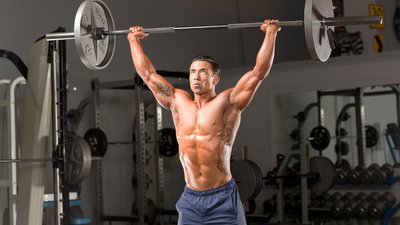When it comes to getting stronger and bigger in the gym, compound lifts should be your focus. These movements incorporate multiple muscle groups and joints to get your body working synergistically and maximize your strength output.
If you are hoping to build a powerful physique, the standing overhead press is one move you won't want to miss. Yet many lifters find themselves getting stuck on the overhead press. Rather than struggle to lift the bar, try simplifying this tricky exercise with these six insider tips.
Tip 1: Keep Your Glutes Tight
Since most people consider the overhead press an upper body exercise, they completely neglect their lower body. Big mistake. If your glutes are weak and loose, it puts you at greater risk for injury as your lower back moves into a bowed position. This is especially dangerous with heavy weight over your head.
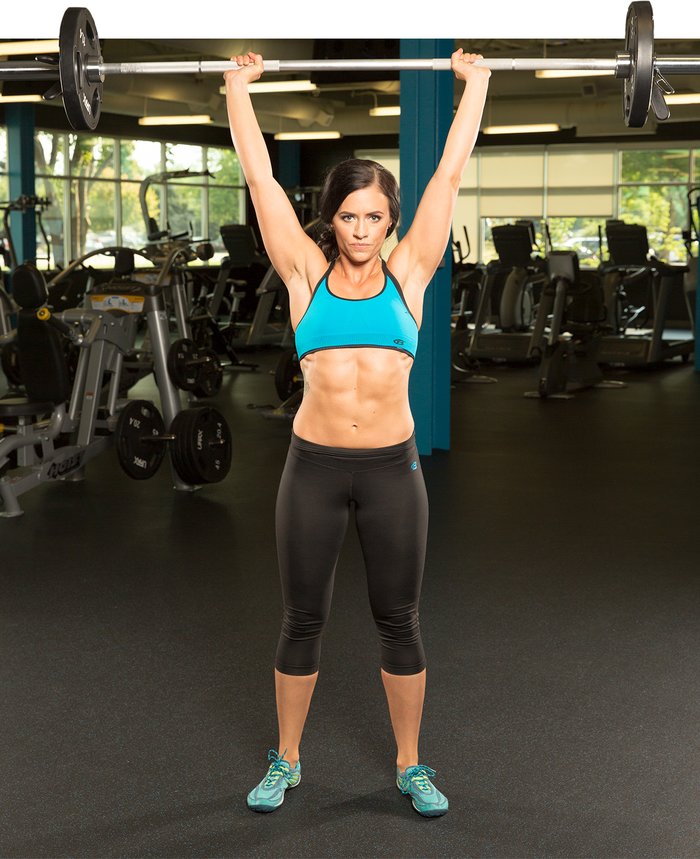
Bowing your back is your body's way of cheating to get the weight up, but it takes away from some of the drive and power you develop with this exercise. You're in a standing position for the overhead press, so you want to make sure your base is as strong as possible. This means contracting your glutes hard as you press the weight over your head. Use the power you already have to push the weight with good form, and you'll instantly see your strength increase.
Tip 2: Let Your Head Move Forward Slightly
As you press the weight up, let your head move forward slightly. Some people resist this natural motion, and that's a mistake. In addition to the bowed back mentioned before, keeping your head back also throws your body out of alignment, making the exercise feel awkward and difficult.
Allowing your head to move forward slightly when you lift the bar will shift you back to your center of balance, making the entire movement pattern feel more comfortable.
You obviously don't want to strain your neck when lifting weights overhead, so find the range of motion that allows you to slightly shift your head forward and back, easing the transition from one rep to the next.
Tip 3: Contract Your Core
The overhead press is one move where you need to be especially careful of your back positioning. After all, holding so much weight directly over your head puts a lot of stress on your vertebrae. Engaging your core muscles creates a strong, powerful base as you lift the weight.
Contracting your core makes it easier to transfer the force you're developing with this exercise into your shoulders and arms as you press the weight overhead. A tight core also helps keep your spinal column properly aligned, reducing your risk of back trouble.
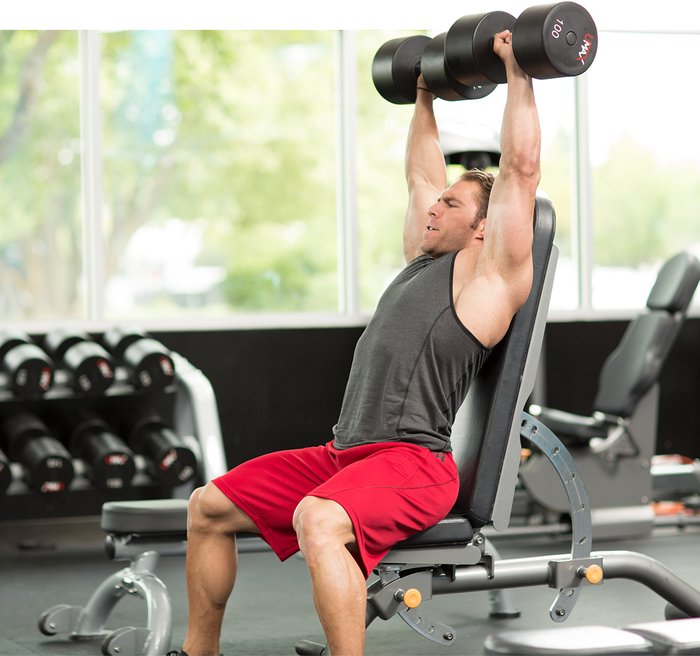
Don't try to lift weights over your head if your core is like a noodle. It won't get you very far and you'll probably hurt yourself. Instead, use your core to create a strong base so the correct muscles are working as you lift.
Tip 4: Think "Elbows Down"
Another important tip is to think "elbows down and tucked in." Excessive elbow flare places far more strain on the shoulder joint, leading to pain and possible injury.
The shoulder is a very complex joint with many injury-prone ligaments and tendons, so do all you can to safeguard it. You can prevent tendonitis and other injuries simply by using proper form at all times.
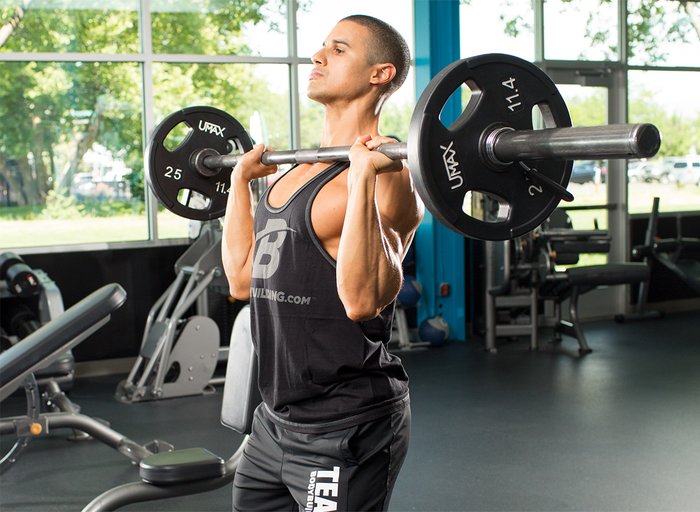
Tucking your elbows down and in will keep your shoulder girdle in proper alignment, keeping it in the strongest position to help you push the weight upward. With this small change in form, you'll notice that you feel significantly stronger when you lift.
Tip 5: Don't Bend Your Wrists
Next time you're in the gym and performing your overhead press, check your wrist position. Wrists often go unnoticed because you're so concerned with your shoulders, back, and core. While these areas are important, you also need to check your wrists for alignment. Even slightly bent wrists can reduce how much force you're able to generate.
Like everything else in your body, your wrists should be tight and rigid as you perform the overhead press, maintaining a straight line with your forearm. If you find you are unable to hold this position, and catch yourself bending your wrists on a regular basis, it could be that they are too weak. If this is the case, adding wrist curls to your workout routine would be a smart choice.
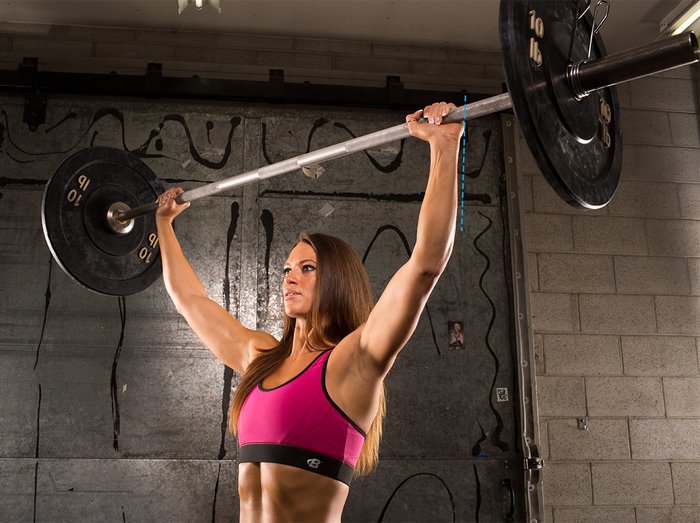
Tip 6: Alternate Your Presses with Other Lifts
Because the overhead press is quite intense and places significant strain on the shoulder joints and lower back, cut back and only train it every few weeks. In the meantime, consider adding other, similar exercises that will help you improve on overhead lifts.
Great exercises to sub in for the overhead press include the dumbbell shoulder press, the Arnold press, or even the seated shoulder press. Each of these movements will help improve your strength in the standing overhead press, so you'll still make progress in the compound lifts.
Taking a break from the overhead press also reduces your risk of injuring your shoulders or back, which could sideline your progress for weeks while you recuperate. By mixing similar exercises into your routine, you ensure continued training and continued results.
Go Forth and Conquer
If you can focus on adding more plates to the barbell in compound exercises, like the overhead press, you are almost guaranteed to make progress in the right direction.
Keep these six tips in mind as you go about your training. Chances are you'll help yourself break through a plateau and get back to seeing superior results.

